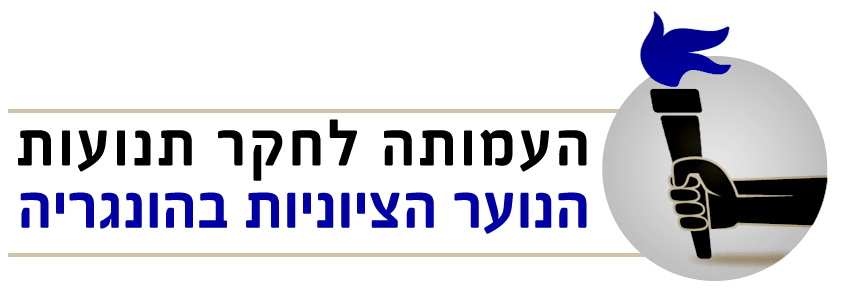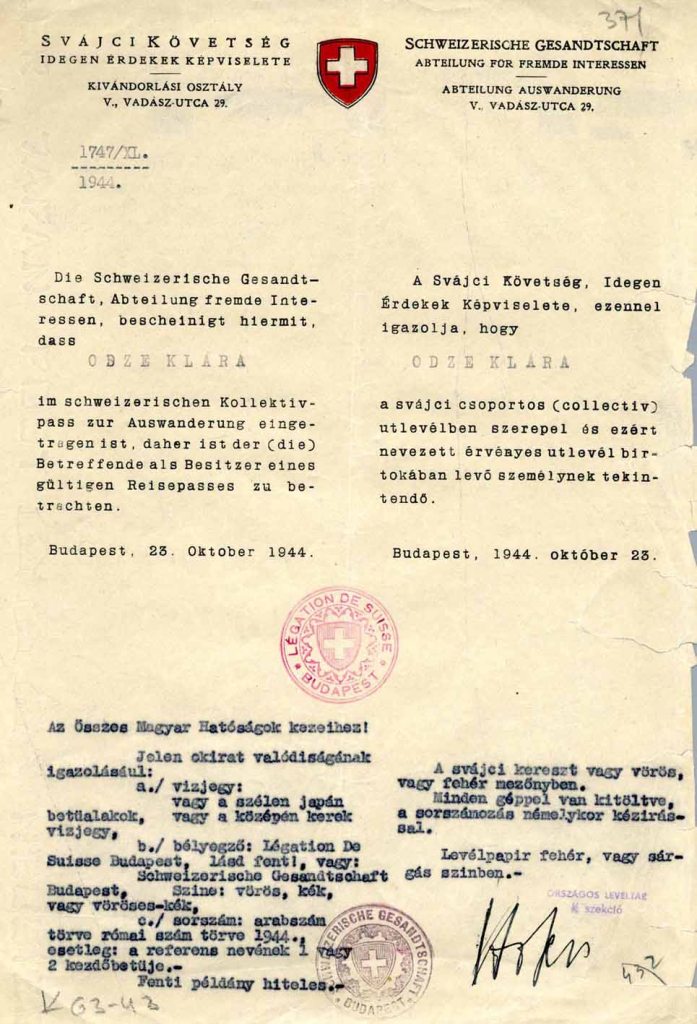Members of the Zionist youth movements from outlying cities began congregating in Budapest, along with other youths who all sought to leave Hungary in order to save their lives. During that period, however, every person had to carry a variety of documents with him at all times: birth certificate, certificate of registration with the local police station (proof of a permanent address), food rations card and a certificate from the army. Anyone who failed to present any of these was arrested and imprisoned. Thus, there arose the need to provide forged documents for all those who were trying to escape or who were in hiding.
The first to use such documents were members of the youth movements themselves, who held forged documents in order to conceal their identities during rescue operations to save other people. Members of the underground Zionist Youth Resistance Movement (ZYRM) acquired extensive experience in forging temporary documents and developed work methods.
The ZYRM operatives needed to forge over 60 different types of certificates, and each one was customized for the requirements of the person who needed it.
The production process
The ZYRM found print shops that were trustworthy, to supply the blank certificates. Some of the printers were even ones that supplied the government offices. Professionals who were members of the underground resistance filled in the certificates in the fancy handwriting style of those days. The certificates were stamped with seals produced by the underground. A graphic artist would make a copy of a seal, using chemical ink and transparency paper. The seal would then be ordered from a seal maker. The forgers also made lead letters and set them in an iron frame. ZYRM operatives obtained original documents on the black market, altered them and even made copies of them.
The most common documents (with the number “issued” in brackets) were:
Protestant baptism certificate (1,200)
Refugee certificate (2,000)
Documents for young men “deserting” the Red Army (the Russian army):
A release certificate from military conscription, including photos (5,400)
Residency confirmation, including a certificate of integrity and confirmation of taxes paid (4,000)
Certificate of Protection from the Swiss government (120,000)
For “diplomatic” (although mainly political) reasons, the Hungarian government honored the freedom of foreign nationals. Thus, the forging of certificates of protection was a means for saving lives. ZYRM members involved in forging documents produced massive quantities of Swiss certificates of protection.
The dangers for the safety of the workshop and their realization
The forgery units had to be extremely cautious in order to avoid discovery, which would lead to the confiscation of their equipment and the arrest of their members. The forgery operations took place in private apartments, and there was a risk that the neighbors would tell the authorities. All of the equipment was moveable, and each unit had suitcases. The moment there was any suspicion of discovery, everything was packed and the apartment was abandoned. If one of the members was late for work by over half an hour, the workshop was packed up and moved to a different location, in case the member had been arrested and might not withstand being tortured during his interrogation.
In November 1944 the workshop managed to set up in the library building of the Fascist Students Union (Csaba Bajtársi Egyesület), through the efforts of Iván Kádár a ZYRM member who also served as a Hungarian officer, a first lieutenant in the Kisegítő Karhatalmi Alakulat (KISKA), the militia of Semmelweis University on Baross St. in Budapest.
A team of four ZYRM members worked in the library building 9-10 hours every day. They communicated with the outside world via liaison Baruch Eizinger, who brought the day’s “order” every morning and picked up the “merchandise” every afternoon.
On 10 December, Baruch did not arrive in the morning or the afternoon. The team packed all the equipment into six suitcases, and were taken by David Gur on an adult tricycle to Kőbánya, about 6 miles away to the rented apartment of three women ZYRM members (Erzsi Goldstein, Hava Barmat and Braha Hőnig) who lived there, disguised as Christians. The forgery unit’s “treasure” was hidden under the women’s beds.
On December 21, 1944, at 2:30 a.m., the team took the workshop equipment to the office of the Budapest Municipal Engineer at 13 Erzsébet Boulevard. Three members of Hashomer Hatzair – Miki Langer, Endre Feigenbaum (Andrei Fabry) and David Gur (Endre Grosz) staffed that workshop. A few minutes after they entered the building, two plainclothes detectives with drawn pistols knocked on the door. The were “just looking for Jews,” and found the team. After the contents of the suitcases was discovered, the detectives realized that the building was being used as a center for underground operations against the regime. At 8:00 a.m., after more thugs had arrived and beaten all the building’s residents, the forgery team were marched to the nearby Arrow Cross district headquarters at 6 Teréz körút. The three team members managed to communicate to one another to swallow any (forged) documents indicating where they lived or any other document that could lead to the exposure to ZYRM operatives.
At the Arrow Cross headquarters they were brutally “interrogated” all night long by local “enthusiasts” and teenage boys aged 15-16, who happened to be passing by. The contents of the suitcases were dumped out, and the team was asked to sort out the equipment. While “organizing” the equipment, they managed to conceal envelopes of orders with codes, photos and various written requests.
The torture was too much for Miki Langer, and died the next day, but David and Endre were taken to the central military prison on Margit Boulevard, where the joined many other ZYRM members (and from which they were freed in a daring operation by the ZYRM).

